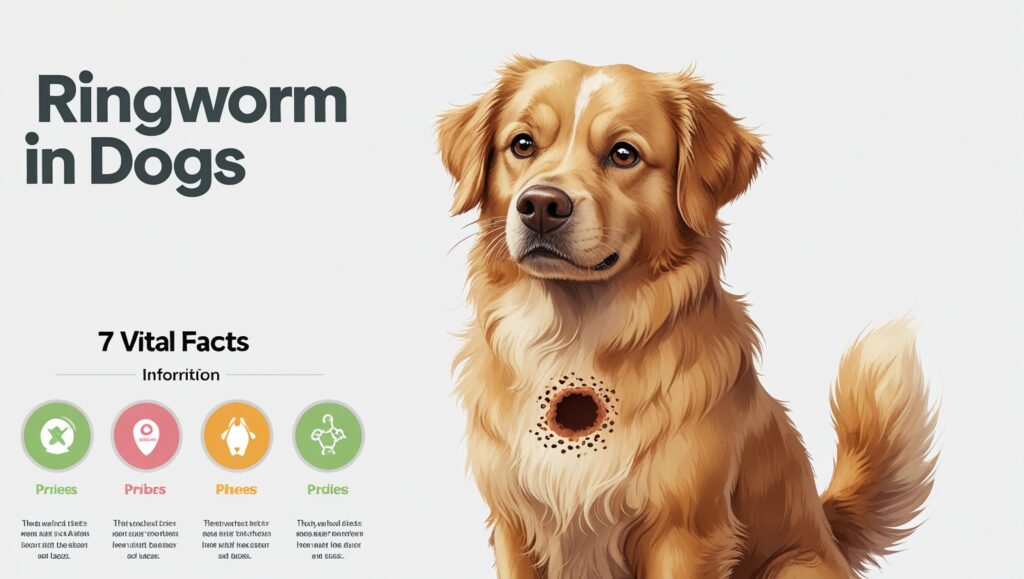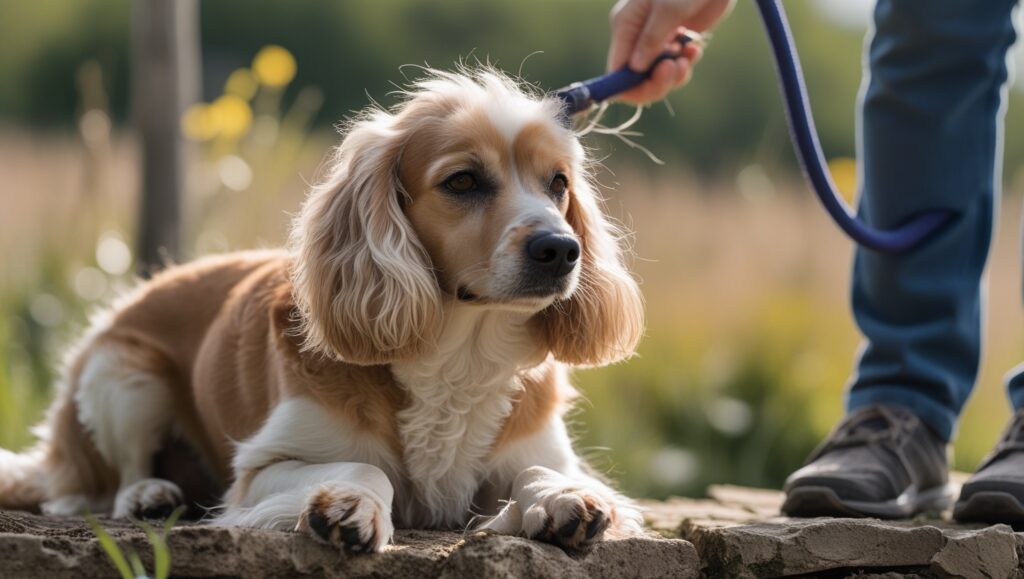Table of Contents
Ringworm in Dogs are one of the most common and, at the same time, misinterpreted cases among pet owners. Although ringworm is considered so because it was thought to be caused by a worm, it is other than a worm but a fungal infection on the skin, hair, and nails. Here is an all-around guide that will enable you to see the causes of ringworm, signs and symptoms, treatment, and prevention of the condition in dogs, and how you should be able to recognize images of this condition to identify the problem early enough.
What is a Ringworm in the Dog?
Ringworm in dogs is an infectious fungus (dermatophilosis), which is acquired. It normally occurs on the superficial parts of the skin and causes bald bald bicycle-type patches which are either reddish or scaly. This is not just an unpleasant condition towards your dog but can be passed to people as well as other animals.
What does ringworm in dogs look like?
Early treatment depends on the identification of symptoms of ringworm visually. The signs and symptoms of the infection usually include:
- Bald and round spots.
- Rough, red, or swollen skin.
- Dentist or strong hair shafts.
- Itching or scratching (it can be absent).
Images of ringworm on dogs may prove useful when you are examining the symptoms of your pet dog for the common physical signs of the infection.
The Source of Ringworm of Dogs
Ringworm is an infection that is caused by a category of fungi known as dermatophytes. Transmission of the infection to dogs may occur in the following ways:
- Direct Contact: From an infected animal or a human being.
- Infected items: Brushes, bedding, furniture or comb/brush/grooming products.
- Environment: Soil, or surface fungal spores.
More vulnerable are puppies, geriatric dogs and a dog with a weakened immune system.
Ringworm Dog Symptoms
The following are the typical symptoms:
- Donut-shaped, bald spots.
- Scaly skin, red or greyish-coloured.
- Crusty lesions.
- Broken or splintered fur.
- Moderate itching of the skin.
- Chronic ones are darkened skin cases.
Having observed these manifestations, it is recommended to turn to pictures of ringworm in dogs and consult a veterinarian in order to be properly diagnosed.
Does ringworm in dogs?
Ringworm is indeed contagious. It is contagious:
- Dog to dog
- Dog to humans (children and immunocompromised people in particular)
- Other pets such as cats or little mammals
- Something must be done quickly so that the infection does not spread in the house.
What is the diagnosis of ringworm?
Some of the ways through which ringworm is diagnosed by veterinarians include:
- Wood’s Lamp Test: There is ultraviolet light that some species absorb and give off light.
- Sketch: Skin scrapings examined under a microscope.
- Fungal Culture: This is the most sensitive test and is slower.
Clear images of the portrayal of ringworm in dogs can also enable pet owners to identify early warning signs before the advanced inspection of a vet.
Options of Treatment of Ringworms in Dogs
Efficient therapy presupposes the mixture of the following methods:
- Medicated shampoos, creams, and ointments are referred to as topical treatments.
- Oral Antifungal Drugs: These are used where the infection has worse conditions.
- Environmental Cleaning: Bed linen, furniture, and living areas are to be treated with complete disinfection.
- Isolation: Isolating the infected dog until he/she can pass a clean test by a vet.
Preventing Ringworm in Dogs
Prevention is the principal method of a healthy pet. These are some of the useful hints:
- Constant grooming and checking of the coat.
- Instant sterilization of personal items such as brushes and beddings.
- Regular vet inspections.
- Make sure that the place where your dog lives is dry and clean.
- Separation of any infected animals at once.
Ringworm in Dogs Home Treatment
Some mild cases may have home remedies that can be used by pet owners in addition to treatment by a vet. The typical home remedies are:
- You can apply diluted apple cider vinegar in the affected areas.
- Application of coconut oil to treat skin.
- Soothing cleansing using antifungal pet shampoos.
Consult your vet before you employ any home remedies as they may not be safe or suitable for your dog.
The Way to Clean Your House Following a Ringworm Infestation
It is important to avoid reinfection through environmental cleaning. Steps include:
- Hot water washing of beddings, toys, brushes and combs was done through hot water.
- Regular cleaning of carpets, furniture and floor by vacuuming.
- Sprays to put antifungal solutions on surfaces
- Keeping your dog off shared spaces until they have completely recovered
Proper cleaning will get rid of remaining fungus spores as well as safeguard the rest of the pets and family members.
When to Visit a Veterinarian
Take the animal to an animal doctor when:
- The rashes on the skin deteriorate or extend at a fast rate.
- The conditions do not improve with the initial treatment.
- This infection appears serious or delicate in places.
Veterinary advice provides a proper treatment course and minimizes the chance of transmitting the condition to other people.
Conclusion
Ringworm in dogs is very prevalent but not nasty. Observing symptoms and checking pictures of ringworm on dogs leads to early disease detection and can be treated on time to avoid its spread. When you love your pet furry friend well, you will enable it to completely eliminate the itch as well as enjoy a happy life.
Do not forget to consult your vet to have your dog analyzed and cured based on his/her needs.
What causes ringworm in dogs primarily?
Dermatophyte ringworm are fungi which are passed on through direct contact, dirty things or the surroundings.
What are the signs that my dog has ringworm?
Search for red or scaly patches of skin, roughly circular and fur-free. It is also possible to recognize the disease by looking at the pictures of the ringworm in dogs.
Can ringworm in dogs be treated domestically?
Minor is treated by topical therapies and specialist diagnosis is very important.



Pingback: 5 Signs of Cancerous Warts on Dogs & When to See a Vet
Pingback: 5 Clear Signs of What Mange Looks Like on a Dog
Pingback: 7 Common Types of Dog Rashes and How to Identify Them